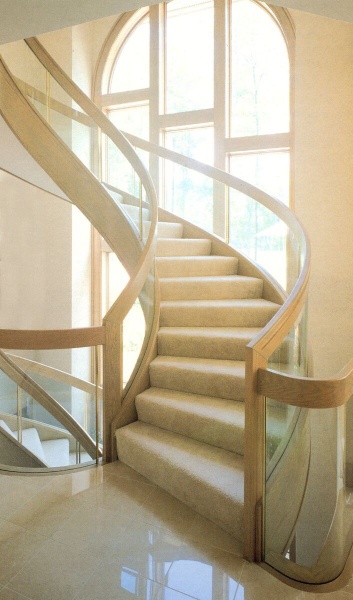When it comes to glazing design, architects are drawn to the aesthetic appeal of curved glass. Curved glass is available in many sizes, shapes, and colors. Sharp angle bends up to 90 degrees, radii up to 180 degrees, multiple radii, double to triple reverse bends, and other complex forms make curved glass a exciting design element. However, there are challenges associated with some curved glass shapes, notably curved glass with tight radii.

Challenge #1: Glass thickness
The minimum radius is affected by the thickness of the glass to be bent. A simple guideline is the minimum radius can be five to 10 times the thickness of the glass. So, 3mm (1/8”) glass will have a minimum radius of 25.4mm (1”).
Challenge #2 Low E Coatings
The tighter the bend, the greater the possibility of damage to the coating. This surface damage is caused by stretching of the outer surface and compression of the inner surface of the glass during the bending process. Bent Glass Design guidelines for its pyrolytic Low E glass vary depending on the thickness of the glass. For instance, for 3mm glass, a minimum radius of three to four feet is possible, however, for 6mm glass, this minimum is five to six feet.
Challenge #3 Optical quality
Tight radii bends can result in surface imperfections during the bending process that result in optical distortion. In addition, distortion can occur in both transmission and reflectance, depending on the viewing angle.
Challenge #4 Safety
Since the bending process is accomplished with flat annealed glass, curved glass is not a safety glazing product unless it is tempered or laminated. Further limitations apply to tempered bent glass with tight radii. However, two plies of curved glass can be laminated to provide impact safety and meet safety glazing requirements.
Contact Bent Glass Design at 215-441-9101 today!


I would like to know how much could be the minimum radius to bend a 13/16″ laminated glass?
This blog post sheds light on the challenges of fabricating and repairing curved glass with tight radii, showcasing the expertise required in the glass industry. Curved glass adds a touch of elegance to architectural designs, but its repair and fabrication demand specialized knowledge. As someone who appreciates unique design elements, I find the complexities of curved glass intriguing. Learning about the considerations and techniques involved in repairing curved glass highlights the level of craftsmanship needed to preserve both aesthetics and functionality.
Architectural innovation often leads us towards awe-inspiring designs, like the allure of curved glass. The challenges, however, are intriguing. The glass thickness, as you pointed out, is a key concern, as it affects the minimum radius. A balance between aesthetics and practicality is crucial.